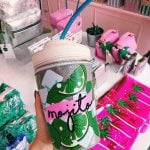Do you feel tranquilly calm when surrounded by green fields and blue skies? Or perhaps slightly alarmed when staring at a red stop sign?
Color has been known to have a powerful psychological impact on people’s behavior and decisions, and this knowledge has been harnessed all too well by designers and marketers alike. Color can often be the sole reason someone purchases a product, where 93% of buyers focus on visual appearance and almost 85% claim color to be their primary reason for purchase!
How do Colors Influence People?
Red – Creates a sense of urgency, which is good for clearance sales. Encourages appetite, thus is frequently used by fast-food chains. Physically stimulates the body, raising blood pressure and heart rate, associated with movement, excitement, and passion.
Blue – The preferred color of men. It’s associated with peace, water, tranquility, and reliability. Blue provides a sense of security, curbs appetite, and stimulates productivity. The most common color used by conservative brands looking to promote trust in their products.
Green – Associated with health, tranquility, power, and nature. Used in stores to relax customers and for promoting environmental issues. Green stimulates harmony in your brain and encourages a balance leading to decisiveness.
Purple – Commonly associated with royalty, wisdom, and respect. Stimulates problem solving as well as creativity. Frequently used to promote beauty and anti-aging products.
Orange & Yellow – Cheerful colors that promote optimism. Yellow can make babies cry, while orange can trigger a sense of caution. Used to create a sense of anxiety that can draw in impulsive buyers and window shoppers.
Black – Associated with authority, power, stability, and strength. Often a symbol of intelligence, but can become overwhelming if used to frequently.
Grey – Symbolizes feelings of practicality, old age, and solidarity. But too much grey can lead to feelings of nothingness and depression.
White – Associated with feelings of purity, cleanliness and safety. Can be used to project an absence of color or neutrality. White space helps spark creativity since it can be perceived as an unaltered, clean state.
Properly Using Color Theory
Use contrasts to reduce eyestrain and allow readers to focus their attention on specific items. Vibrancy can dictate the emotional response users have to your design.
For example, choosing brighter colors can lead users to feel more energetic, which can evoke better responses and reactions. But if your website is information-intensive, you may find that a darker color theme will make it easier for readers to process all your data.
How Are Major Brands Using Colors?
McDonald’s chooses high-energy colors like red and yellow which appeal to children, kindle appetites, and create a sense of urgency. Of course, Ronald McDonald himself is popular with the kids, but he’s also sure to agitate parents quickly. This facilitates faster customer turnover.
It’s scary to think how powerful this tactic has been for Micky D’s, which might not have been the same ridiculously big chain it is today without using red and yellow so effectively. McDonald’s sure wouldn’t be so popular trying to market all that unhealthy food using the color green!
Interestingly, the only major global brand to use green as its primary color is Starbucks. Using green shows that Starbucks hopes to promote a sense of relaxation in their cafes, inviting customers to come in for a coffee break during a stressful day.
How are you incorporating color into your branding and marketing efforts?

[Click for larger version]
Republished by permission. Original here.
Image Source: Homestead
[“source-smallbiztrends”]











